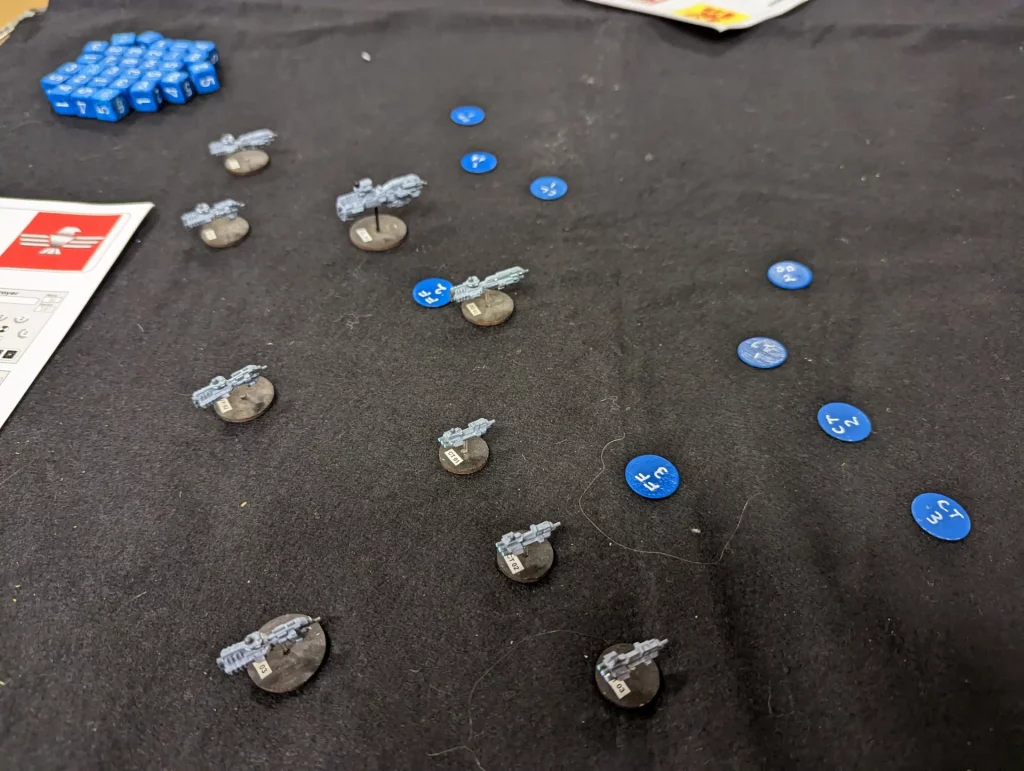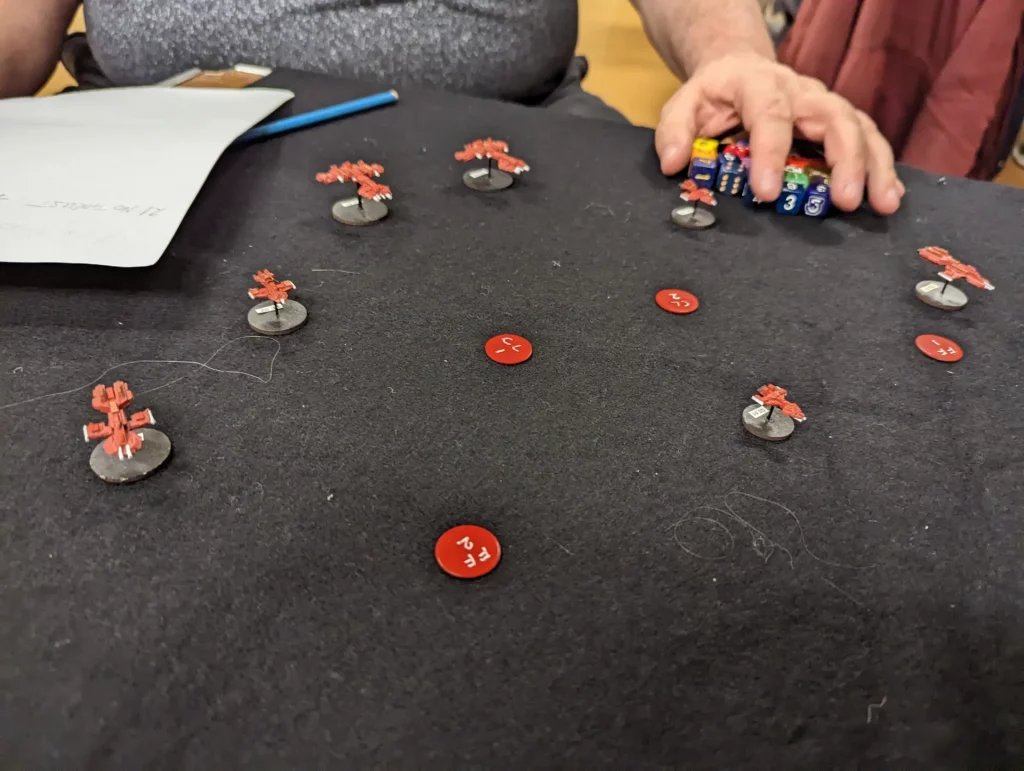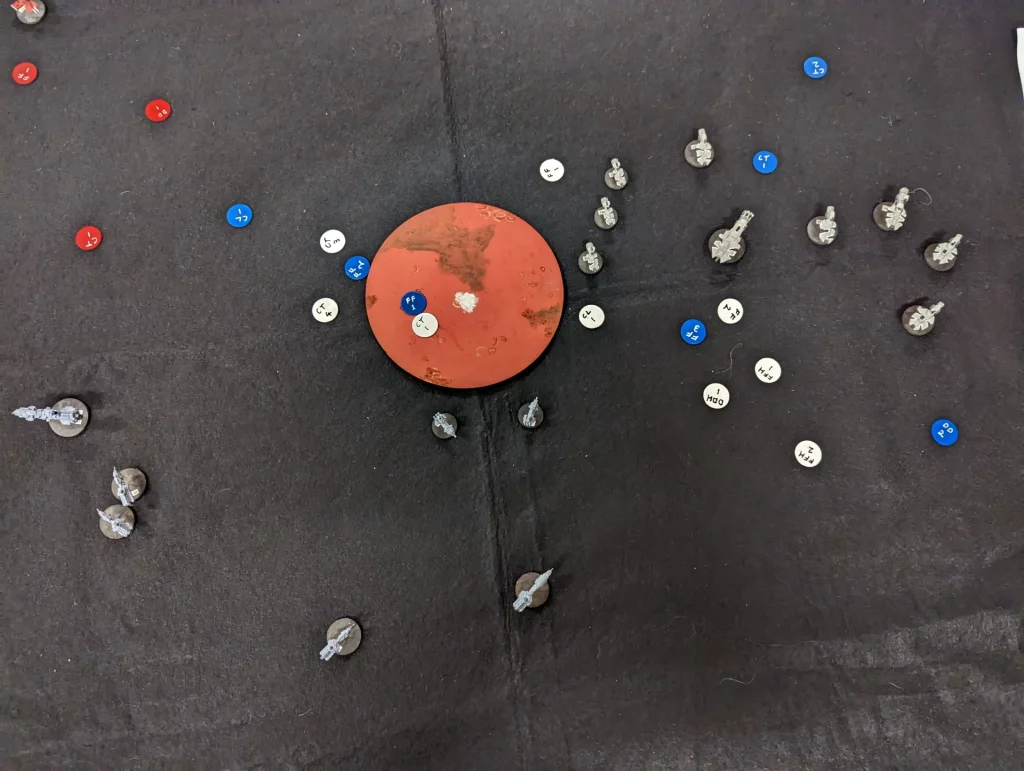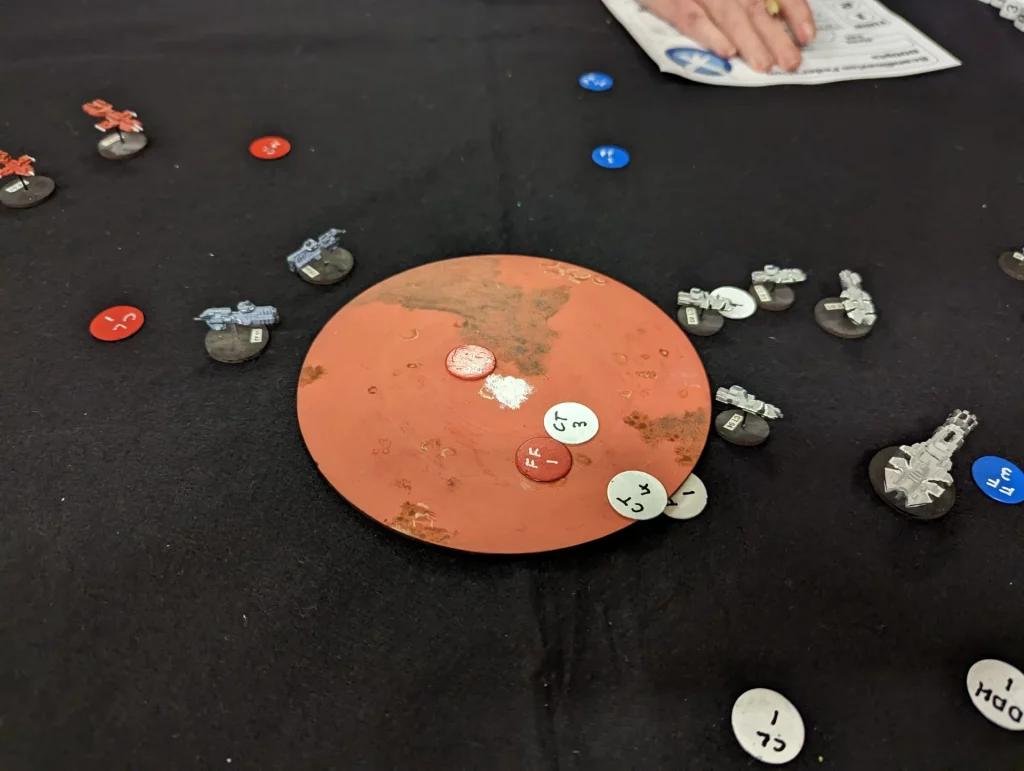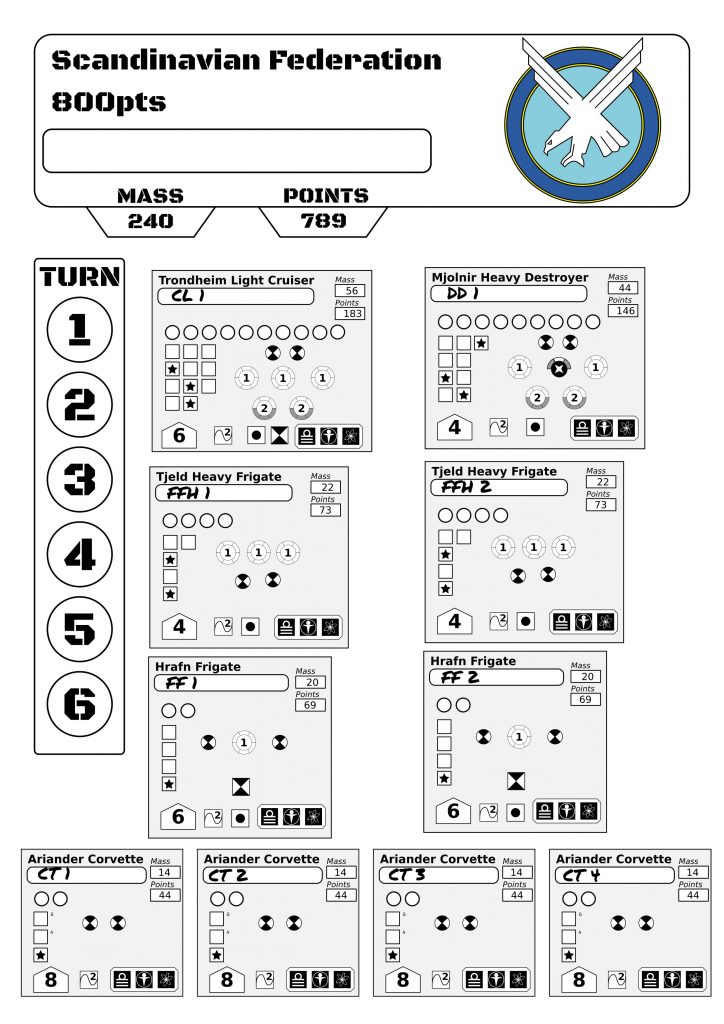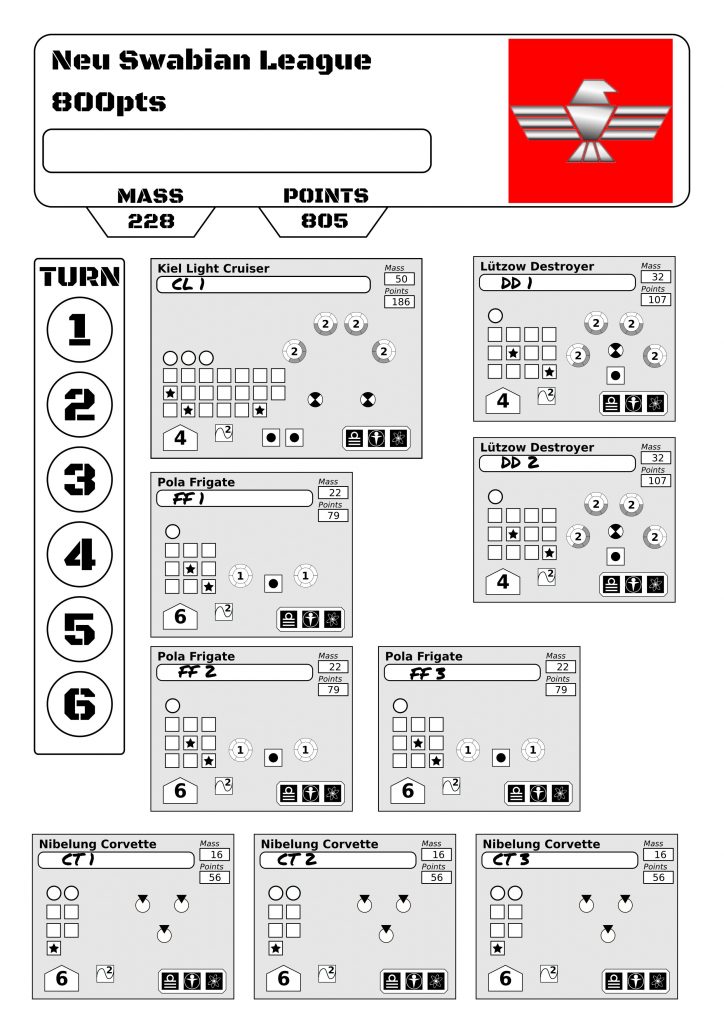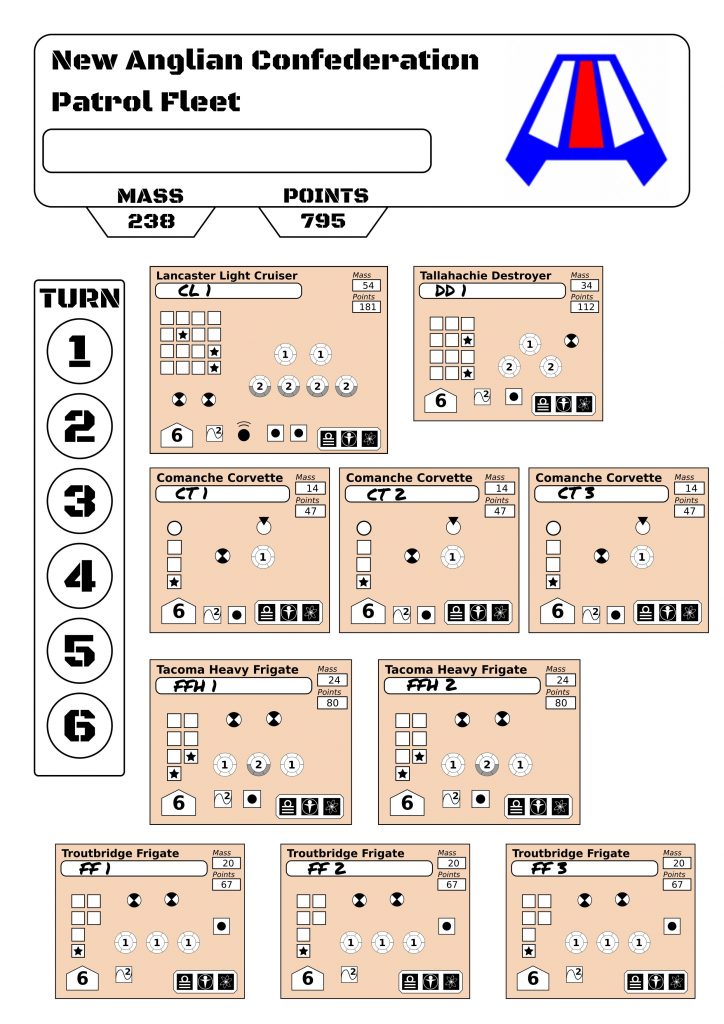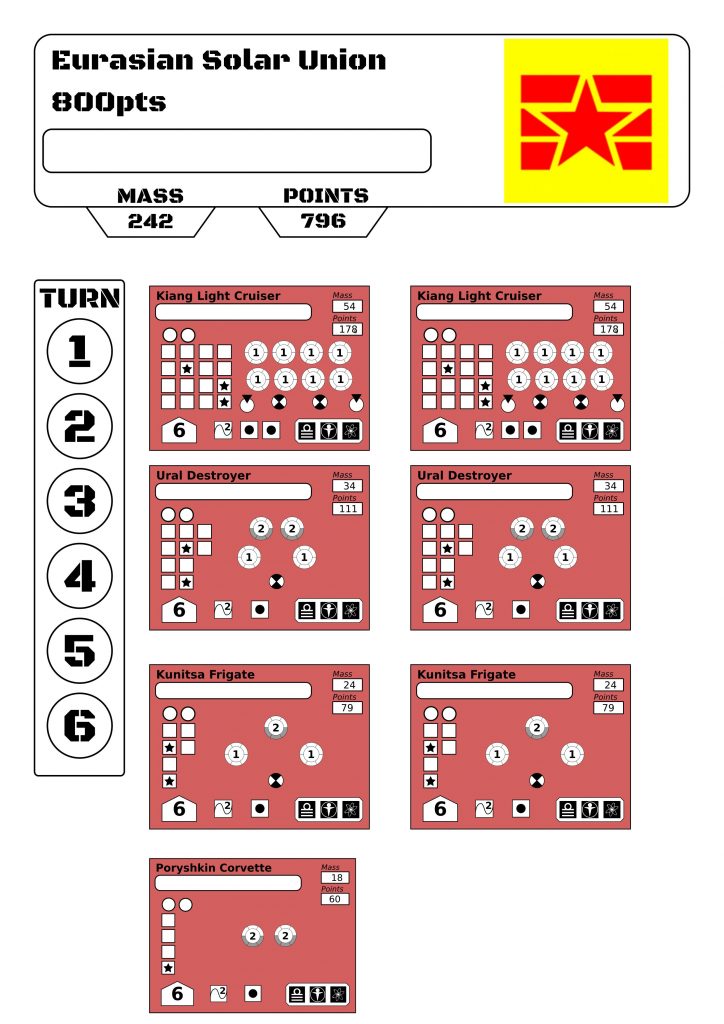Orbital Superiority
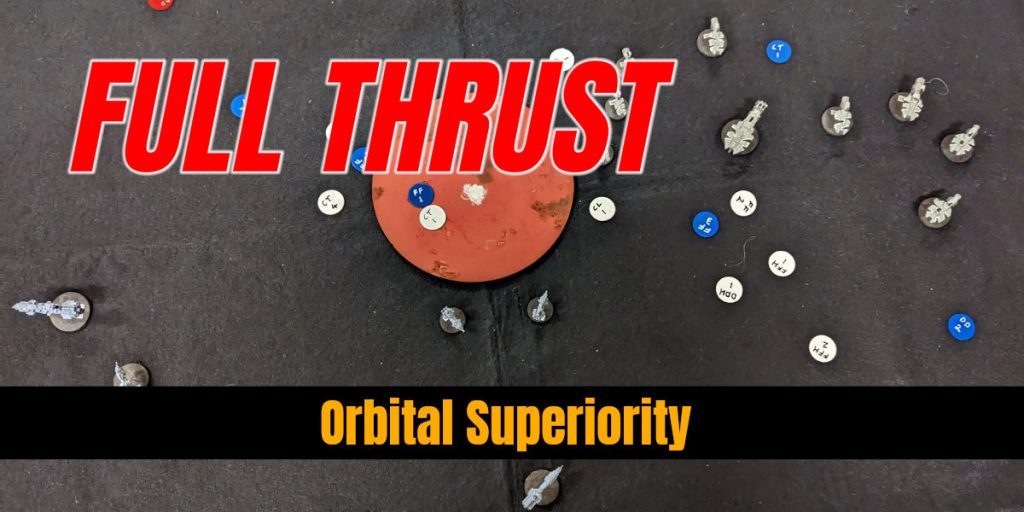
We had another game of Full Thrust last night, this time with three players, using my Orbital Superiority scenario. It as the Neu Swabian League, the Eurasian Solar Union and the Scandinavian Federation fighting over control of a planet. It was the first outing for my ScanFed fleet, so it was interesting to see how they played out.
This scenario requires the use of most escort class vessels, so had more small ships than we’re used to. I also tweaked some of the designs to try and make them a bit more suitable. The scenario puts a lot of emphasis on manoeuvrability, so I tweaked some of my ships designs to improve their thrust ratings. The ScanFeds had a lot of thrust 4 ships, which I upped to 8, and the NSL had some even slower designs which I also made more manoeuvrable.
The scenario had the following rules:
- Total of 800 points of ships per side, either Escort (less than MASS 50) or Cruiser (less than MASS 100).
- No more than 400 points spent on Cruisers.
- No more than a dozen ships per side.
- No fighters.
There was a single planet in the centre of the battle area, and points were scored for being within 3″ of the planet’s surface. A fleet which had a ship within 3″ at the end of a turn scored +1 point. If they also had the most number of ships within 3″, they scored an extra +1 point.
At the end of turn 6, if a fleet was the only one within 3″ then it scored an extra +3 points.
Each ship that was destroyed cost the fleet -1 points (-2 for cruisers).
So the aim was to get to the planet and dominate the orbital space as quickly as possible in order to start gaining points, but you also had to not get killed.
The first turn was spent with all fleets heading towards the planet. The ESU held back for a bit, whilst both the NSL and ScanFed fleets tried to move in quickly. There was some shooting between the NSL and the ESU, with an ESU corvette taking damage to its bridge and power systems. It managed to prevent its reactor from overloading, but it was still out of control.
By turn 2, the latter two fleets had reached the planet and were battling over who had control of the orbit. Each got a point for being within close range of the planet.
The NSL corvettes were equipped with three submunition packs, which could do considerable damage at short range – but they were single shot weapons. I didn’t expect the corvettes to last long, so I used them as soon as they were within suitable range of a target.
The ScanFed managed to if not win on the number of ships in orbit, then at least to match what the NSL managed to do. The NSL’s points though were being eroded due to a battle of attrition with the ESU.
Unlike the other two fleets, the ESU had two light cruisers. It also had fewer ships overall, which made it hard for it to compete on planetary points, but it was doing well in knocking down the NSL. The two light cruisers had 8 class 1 beams apiece, which meant they were deadly when they got within 12″ of a target, but ineffective beyond that range.
As well as using the standard vector movement, we also used gravity in this game. Any ship that started the turn within 3″ of the planet’s surface had their vector token moved 1″ by gravity. It didn’t have a huge effect, but did mean that ships moving slowly around the planet had to take gravity into account.
By turn four, we were running out of time so we made that turn the last. The ESU managed to ram one of their light cruisers into the planet – a slight miscalculation of vectors. The NSL had lost their light cruiser, a destroyer, a frigate and a corvette.
The ScanFed won on points, the NSL lost on ship losses. The ESU were now getting into a position where they would start opening up on the ScanFed, which possibly would have changed how things had gone if we’d had an extra couple of turns. The ScanFed still had numerical superiority, as well as the most manoeuvrable ships, so were likely to continue to win at controlling the planet. The question would have been whether the ESU and NSL could have whittled them down enough before the end of the game.
The main aim of this scenario was to force the various fleets to engage with each other. Previously we’ve had battles with ships hanging back and sniping from long range, which can work as a tactic but which can be pretty boring.
The planet needed some thought to manoeuvre around, as well as adding a blocker to firing. Forcing everyone into a narrow band worked to some extent – though the ESU (it was the player’s first game for a long time, so they were being cautious and getting to grips with the vector system) did hang back a bit. Unlikely previously where we’d had mostly capital class ships though, they did need to get into close range to be fully effective.
The submunition packs on the NSL corvettes were highly effective – but one shot only. The ScanFed corvettes only had PDS – we used a rule that they could be used against ships within a 4″ range. Given the close range, PDS got used quite heavily in the ship to ship warfare. The ScanFed player felt their ships were under designed, but they ended up winning. The corvettes initially had thrust 4 and an area defence fire control. I had swapped out the latter for more thrust, which made them a lot more useful in this scenario (especially since we had no fighters), but maybe submunitions would have been better.
My ScanFed designs have a lot of armour and low hull, mostly just to try out that extreme design, and I don’t think it worked too badly. As always, there can be a lot of difference between ship designs in Full Thrust, but personally I think that’s what makes it interesting.
A change I might make is to limit it to 4 turns rather than 6, since that has more chance of being completed within an evening. There was a lot of chat during the game which stretched things out, but I’d prefer a relaxed game to one where we are racing to get it finished. I might also reduce the fleet size to 600 points, which would also simplify things. A lot of vector tokens in close proximity did get complicated. Fewer ships would mean a less busy table, and less to think about.
